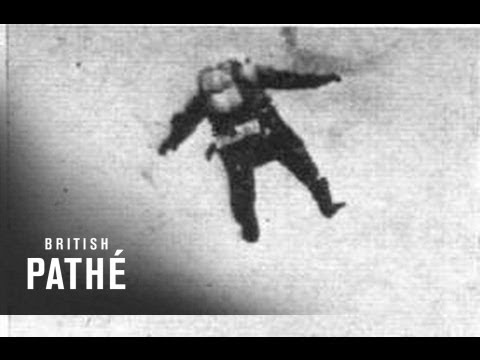Joseph William Kittinger II s a retired Colonel in the United States Air Force and a USAF Command Pilot. Following his initial operational assignment in fighter aircraft, he participated inProject Manhigh and Project Excelsior in 1960, setting a world record for the longest skydive from a height greater than 19 miles.He was also the first man to make a solo crossing of the Atlantic Ocean in a gas balloon.
Serving as a fighter pilot during the Vietnam War, he achieved an aerial kill of a North Vietnamese MiG-21 jet fighter and was later shot down himself, spending 11 months as a prisoner of war in a North Vietnamese prison.
Project Excelsior was a series of parachute jumps made by Colonel (then Captain) Joseph Kittinger of the United States Air Force in 1959 and 1960 from helium balloons in the stratosphere. The purpose was to test the Beaupre multi-stage parachute system intended to be used by pilots ejecting from high altitude. In one of these jumps Kittinger set world records for the highest parachute jump, the longest parachute drogue fall and the fastest speed by a human through the atmosphere. The record for fastest speed by a human through the atmosphere is now held by Felix Baumgartner of the Red Bull Stratos project.
The first test, Excelsior I, was made on November 16, 1959. Kittinger ascended in the gondola and jumped from an altitude of 76,400 feet (23,287 m) .In this first test, the stabilizer parachute was deployed too soon, catching Kittinger around the neck and causing him to spin at 120 revolutions per minute. This caused Kittinger to lose consciousness, but his life was saved by his main parachute which opened automatically at a height of 10,000 feet.
Despite this near-disaster on the first test, Kittinger went ahead with another test only three weeks later. The second test, Excelsior II, was made on December 11, 1959. This time, Kittinger jumped from an altitude of 74,700 feet and descended in free-fall for 55,000 feet before opening his main parachute.
The third and final test, Excelsior III, was made on August 16, 1960. During the ascent, the pressure seal in Kittinger’s right glove failed, and he began to experience severe pain in his right hand from the exposure of his hand to the extreme low pressure. He decided not to inform the ground crew about this, in case they should decide to abort the test. Despite temporarily losing the use of his right hand, he continued with the ascent, climbing to an altitude of 102,800 feet.
The ascent took one hour and 31 minutes and broke the previous manned balloon altitude record of 101,516 feet, which was set by Major David Simons as part of Project Manhigh in 1957. Kittinger stayed at peak altitude for 12 minutes, waiting for the balloon to drift over the landing target area. He then stepped out of the gondola to begin his descent.
The small stabilizer parachute deployed successfully and Kittinger fell for 4 minutes and 36 seconds,setting a long-standing world record for the longest free-fall. During the descent, Kittinger experienced temperatures as low as −94 °F. In the free-fall stage, he reached a top speed of 614 miles per hour. At an altitude of 17,500 feet, Kittinger opened his main parachute and landed safely in the New Mexico desert. The whole descent took 13 minutes and 45 seconds and set a world record for the highest parachute jump.
